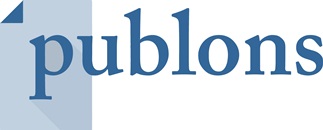RISK FACTORS AFFECTING THE FORMATION OF ORTHODONTIC DISORDERS
DOI:
https://doi.org/10.32689/2663-0672-2025-1-15Keywords:
human henom, orthodontic disorders, pathological occlusion, occlusal variations, genetic anomalies, risk factorsAbstract
The development of the dentofacial system is a result of the interaction between heredity and environment. Genotype determines the developmental potential, while external factors can both promote and hinder its realization. Understanding the genetic basis of orthodontic anomalies is one of the most important directions of modern dentistry. In-depth research into the hereditary mechanisms underlying the development of these disorders opens up new perspectives for the development of effective methods of prevention and treatment, as well as a personalized approach to each patient. Objective. To conduct a comparative analysis of the risk factors forming malocclusions. Methods. In the course of the study, scientific developments published on the research platforms Google Scholar and PubMed were analyzed. A bibliosemantic method and structural-logical analysis were used. The methodological basis of the study was a systematic approach. Conclusions. The formation of malocclusion is the result of a complex interaction between genetic predisposition and exogenous factors. Although genetic determination plays a significant role in the development of the dentofacial system, the influence of external factors, such as myofunctional disorders, somatic diseases, and environmental conditions, is no less important. Thus, they influence morphogenesis processes, leading to developmental anomalies. Epigenetic mechanisms, such as DNA methylation and histone modifications, allow external factors to modify gene expression without changing the nucleotide sequence. Thus, they influence morphogenesis processes, leading to the development of phenotypic deviations.
References
Взаємозв’язок зубощелепних аномалій та соматичної патології у дітей старшого шкільного віку. В.С. Мельник, Л.Ф. Горзов, К.В. Зомбор, С.В. Мельник. Вісник стоматології. 2021. № 3 (116), Т 41-2021. С. 28–32
Взаємозв’язок ідіопатичного підліткового сколіозу хребта та зубощелепних аномалій. Л.Ф. Горзов, В.С. Мельник, В.В. Горзов. Лікарська справа. 2019. № 7-8. С. 30–34
Генетична патологія та її стоматологічні прояви. Н.І. Кіцера, Л.Є. Ковальчук, М.М. Рожко. Івано-Франківськ – Львів: Фоліант, 2021. 240 с.
Оцінка ризику виникнення зубощелепних аномалій у дітей у залежності від активності каріозного процесу. В.С. Мельник, Л.Ф. Горзов. Матеріали 5-го національного українського стоматологічного конгресу «стоматологічне здоров’я – інтегральна складова здоров’я нації». 2019. С. 188
Поширеність зубощелепових аномалій у дітей в залежності від особливостей сімейного анамнезу. Л.Ф. Горзов, В.С. Мельник. Збірник наукових праць ІІI Міжнародного наукового конгресу молодих вчених Європи. 2019. С. 109–112.
Роль генів і навколишнього середовища в розвитку прогенічних форм прикусу (огляд). К.В. Стороженко. Український стоматологічний альманах. 2016. № 1(1). С. 112–118.
Роль деяких етіологічних чинників у виникненні зубощелепних аномалій. А.І. Антоненко. Вісник стоматології. 2007. № 3. С. 34–36.
Характеристика перинатального періоду дітей, народжених від матерів, які вживають алкоголь. О.О. Ріга, Н.М. Коновалова. Неонатологія, хірургія та перинатальна медицина. 2017. № 7(4). С. 46–49.
A comprehensive review of the literature and data analysis on hypo-hyperdontia./ S.K. Mallineni, S. Nuvvula, A.C. Cheung, R. Kunduru. Journal of Oral Science. 2014. Vol. 56(4). P. 295–302.
Adolescent idiopathic scoliosis and malocclusion - a cross sectional study of female patients without previous orthodontic treatment. J. Głowacka, J. Opydo-Szymaczek, K. Mehr, T. Pawlaczyk-Kamieńska. Anthropologischer Anzeiger; Bericht über die biologisch-anthropologische Literatur. 2022. Vol. 77(4). P. 269–280.
Antibiotic use in endodontic treatment during pregnancy: A narrative / T. Aliabadi, E.A. Saberi, A.M. Tabatabaei, E. Tahmasebi. European journal of translational myology. 2022. Vol. 32(4). P. 10813
Apert syndrome: magnetic resonance imaging (MRI) of associated intracranial anomalies. A.P. Tan, K. Mankad. Child’s Nervous System. 2017. Vol. 34(2). P. 205–216.
Association between Maternal Smoking during Pregnancy and Missing Teeth in Adolescents. J. Nakagawa Kang, Y. Unnai Yasuda, T. Ogawa, M. Sato et al. International Journal of Environmental Research and Public Health. 2019. Vol. 16(22). P. 4536.
Association between upper airway obstruction and malocclusion in mouth-breathing children. P. Festa, N. Mansi, A.M. Varricchio, F. Savoia et.al. ACTA Otorhinolaryngologica Italica. 2021. Vol. 41(5). P. 436–442.
Cleft lip and palate: understanding genetic and environmental influences. / M.J.Dixon, M.L. Marazita, T.H. Beaty, J.C. Murray. Nature Reviews Genetics. 2011. Vol. 12(3). P. 167–178.
Clinical and genealogical analysis of families where the children with crowded teeth were born. V. Melnyk, L. Horzov, K. Zombor. Slovak international scientific journal. 2020. Vol. 46. P. 24–27
Deleterious oral habits related to vertical, transverse and sagittal dental malocclusion in pediatric patients. L.H.G. Rodríguez-Olivos, P.R. Chacón-Uscamaita, A.G. Quinto-Argote, G. Pumahualcca, L.F. Pérez-Vargas. BMC Oral Health. 2022. Vol. 22(1). P. 88.
Dental anomalies: classification, causes and treatment. M.B. Salokhiddinov, M.S. Gubayev. Journal of New Century Innovations. 2024. Vol. 65(2). P. 72-82.
Effects of fetal involvement of inadvertent radioactive iodine therapy for the treatment of thyroid diseases during an unsuspected pregnancy. S. Iijima. Eur J Obstet Gynecol Reprod Biol. 2021. Vol. 259. P. 53–59.
Enhancing and maintaining chondrogenesis of synovial fibroblasts by cartilage extracellular matrix protein matrilins. M. Pei, J. Luo, Q. Chen. Osteoarthritis and Cartilage. 2018. Vol. 16(9). P. 1110–1117.
Evolving concepts of heredity and genetics in orthodontics. D.S. Carlson. American Journal of Orthodontics and Dentofacial Orthopedics. 2015. Vol. 148(6). P. 922–938
Genetic and environmental contributions to variation in human tooth size. P.J.Dempsey, G.C. Townsend. Heredity. 2001. Vol. 86(6). P. 685–693
Genetic and Environmental Determinants of Dental Occlusal Variation in Twins of Different Nationalities. R.S. Corruccini, G.C. Townsend, L.C. Richards et al. Human Biology. 1990. Vol. 62(3). P. 353–367
Genetic Basis of Dental Disorders. Tyagi, R. Journal of Oral Health & Community Dentistry. 2008. Vol. 2(3). P. 55–61.
Genetic Factors Involved in Mandibular Prognathism. A. Doraczynska-Kowalik, K.H. Nelke, W. Pawlak, M.M. Sasiadek, H. Gerber. J Craniofac Surg. 2017. Vol. 28(5). P. 422–431
Genetics and epigenetics of class II and class III malocclusions. M. Subono, I.R.N. Alima, E.I. Auerkari. Journal of Physics: Conference Series. 2021. Vol. 1943(1). P. 012091.
Genetics of malocclusion: A review. Mokhtar, Khairani & Bakar, Noraini & Tahir, Aisyah. IIUM Journal of Orofacial and Health Sciences. 2020. Vol. 1. P. 1–6.
Genome-wide Linkage Analysis of Mandibular Prognathism in Korean and Japanese Patients. T. Yamaguchi, S.B. Park, A. Narita, K. Maki, I. Inoue. Journal of Dental Research. 2005. Vol. 84(3). P. 255–259.
Importance of gene-environment interactions in the etiology of selected birth defects. H. Zhu, S. Kartiko, R.H. Finnell. Clin. Genet. 2009. Vol. 75. P. 409–423.
Mapping Human Epigenomes. C.M.Rivera, B. Ren. Cell. 2013. Vol. 155(1). P. 39–55.
Morphological and biological effects of maternal exposure to tobacco smoke on the feto-placental unit. E. Jauniaux, G.J. Burton. Early human development. 2007. Vol. 83(11). P. 699–706.
Recurring homozygous ACTN2 variant (p.Arg506Gly) causes a recessive myopathy. S. Donkervoort, P. Mohassel, M. O'Leary et.al. Annals of clinical and translational neurology. 2024. Vol. 11(3). P. 629–640.
Review of Etiology of Posterior Open Bite: Is There a Possible Genetic Cause? W. Huang, B. Shan, B.S. Ang, J. Ko, R.D. Bloomstein. Clinical, Cosmetic and Investigational Dentistry. 2020. Vol. 12. P. 233–240.
Review: Hyperthermia and fever during pregnancy. Birth defects research. M.J. Edwards. Clinical and molecular teratology. 2006. Vol. 76(7). P. 507–516.
Study of the risk factors associated with the development of malocclusion. D. Petrović. B. Vukić-Culafić, S. Ivić, M. Djurić, B. Milekić. Vojnosanitetski pregled. 2013. Vol. 70(9). P. 817–823.
The Association of ACTN3 Rs1815739 Polymorphism with Various Malocclusion. H. N. I. Alalim, B. F. Eken, K. Ulucan, F. Özdemir. Turkish journal of orthodontics. 2022. Vol. 35(2). P.127–132
The etiology, clinical features, and treatment options of hemifacial macrosomia. S. Luo, H. Sun, Q. Bian, Z. Liu, X. Wang. Special Issue on Oral Genetic Disorders and Rare Diseases. 2023. Vol. 29(6). P. 2449–2462.
The Prevalence of Hypodontia and Hyperdontia in Orthodontic Patients. V. Dzemidzic, E. Nakas, I. Gagula, J. Kozadra, A. Tiro. Acta Medica Academica. 2020. Vol. 49(1). P. 51–56.
Treacher Collins Syndrome: Genetics, Clinical Features and Management. B.A. Marszałek-Kruk, P. Wójcicki, K. Dowgierd, R. Śmigiel. Genes (Basel). 2021. Vol. 12(9). P. 1392.










